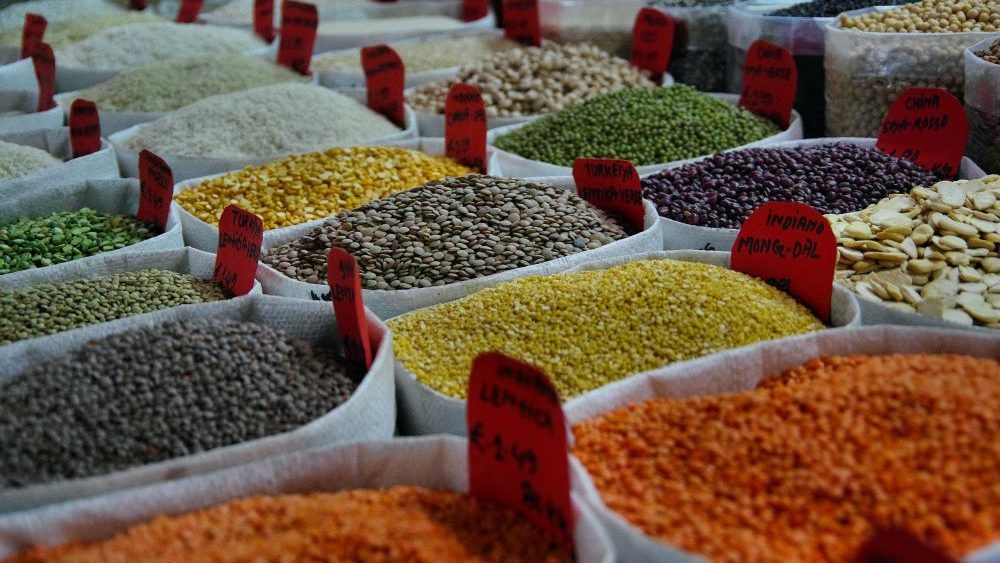By Busani Bafana for GCRF-AFRICAP
The SADC Plant Genetic Resources Centre (SPGRC) in Lusaka, Zambia is a regional gene bank, keeping in trust, more than 18 000 seeds of various food crops found and eaten in Southern Africa.
A gene bank is a secure dedicated depository for seed collections stored for posterity and research.
The Food, Agriculture and Natural Resources Policy Advocacy Network (FANRPAN) in partnership with the University of Leeds is implementing the GCRF-AFRICAP programme, one of whose key components is Food Systems Research. Researchers have been evaluating the climate resilience of seed systems and exploring ways to incorporate climate model information within crop breeding.
Dr. Justify Shava, a plant breeder specialising in the development of crop seed varieties, is the Head of SPGRC. He is in charge of coordinating the conservation of the seeds of different crop species found within the SADC region.

The Centre was established by regional governments after the realisation that these crop species were threatened by the impacts of climate change.
“People have changed food preferences and crops species that were eaten long ago are no longer on the menu and are frowned upon in urban areas yet these are the cornerstones of food and nutrition security,” notes Dr. Shava. “We are keeping species of different crops so that researchers in crop improvement have raw materials for use in breeding better crops.”
Dr. Shava shared his thoughts about why seed conservation and breeding are pivotal to ensuring a food and nutrition future in Africa. Read excerpts from the Q&A:
Q: As the planet warms, what is the Centre doing to develop seeds that can cope with the changes while producing more and healthier foods without harming the environment?
A: Yes. This is one of the key objectives of the SPGRC. To keep seeds of diverse genetic makeup. In science, we say every organism has DNA which is the internal genetic mechanism which makes that organism unique in some way. By keeping the diversity of seed at the regional gene bank we are aware that there are a reservoir of characteristics that can render our future varieties resistant or tolerant to the harsh environmental conditions that are being experienced in the region as a result of climate change. We are talking of high temperatures, droughts and floods.
Scientists are working to unpack the intrinsic value of these seeds that we are keeping at the centre so that we find out which seeds are good for what. We are doing the characterisation, which in agriculture science refers to the process of studying and describing the characteristics which could be either beneficial or not beneficial for us. We have done characterisation for some material and need to characterise all the material so we know the features of the seeds that can help cope with the impacts of climate change.
Q: How diverse are crop wild relatives in the SADC region and are these in use?
A: Through the studies that have been conducted by the SPGRC through collaboration with institutions such as Bioversity International, it was found that in the SADC region we have over 1900 different species of crop wild relatives. These are species which are occurring in the wild but they are related to the crops we grow and eat every day.
We have a wide array of crop wild relatives which are potentially useful to our modern agriculture. Crop wild relatives are already adapted to the harsh conditions in the wild. They survive some natural pressures – for example, diseases and arid conditions – better than our crops. Moving forward we need to use some of these crop wild relatives as sources of genes that are beneficial in producing new crop varieties that are adapted to the new growing conditions brought about by climate change.
There are efforts to use these crop wild relatives in our breeding programmes but we have not used much of them. We can single out a few cases where wild crop relatives have been infused to come up with modern varieties but we need to do more to tap the full potential of these wild crop relatives.
Q: Do we know the food and nutritional potential of the wild crop relatives?
A: We have a lot of indigenous species but these species have not been profiled in great depth to know their nutritional potential. We have profiled the commonly eaten species like Nyeve but there are still others whose nutritional value we do not know. As plant scientists, we believe that there are wild species that could give us the nutritional boost especially now that we have COVID-19.
There are also some species that have been found to have high zinc content for instance occurring in the wild and also in farmers’ fields. We think that if these species could be promoted in the communities we could have healthier communities that could naturally resist some of these health challenges without going to the modern pharmacy. We have wild species but we do not know more about them and need to do more to extract their nutritional value. There is a project in the pipeline to study the nutritional value of these species and promote them in the African communities if funding materialises.
